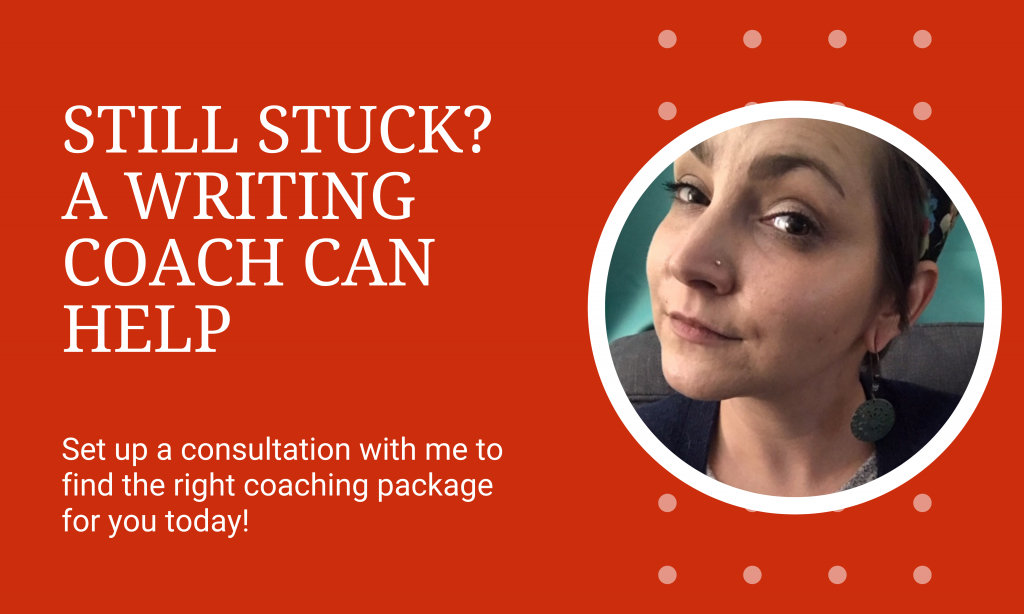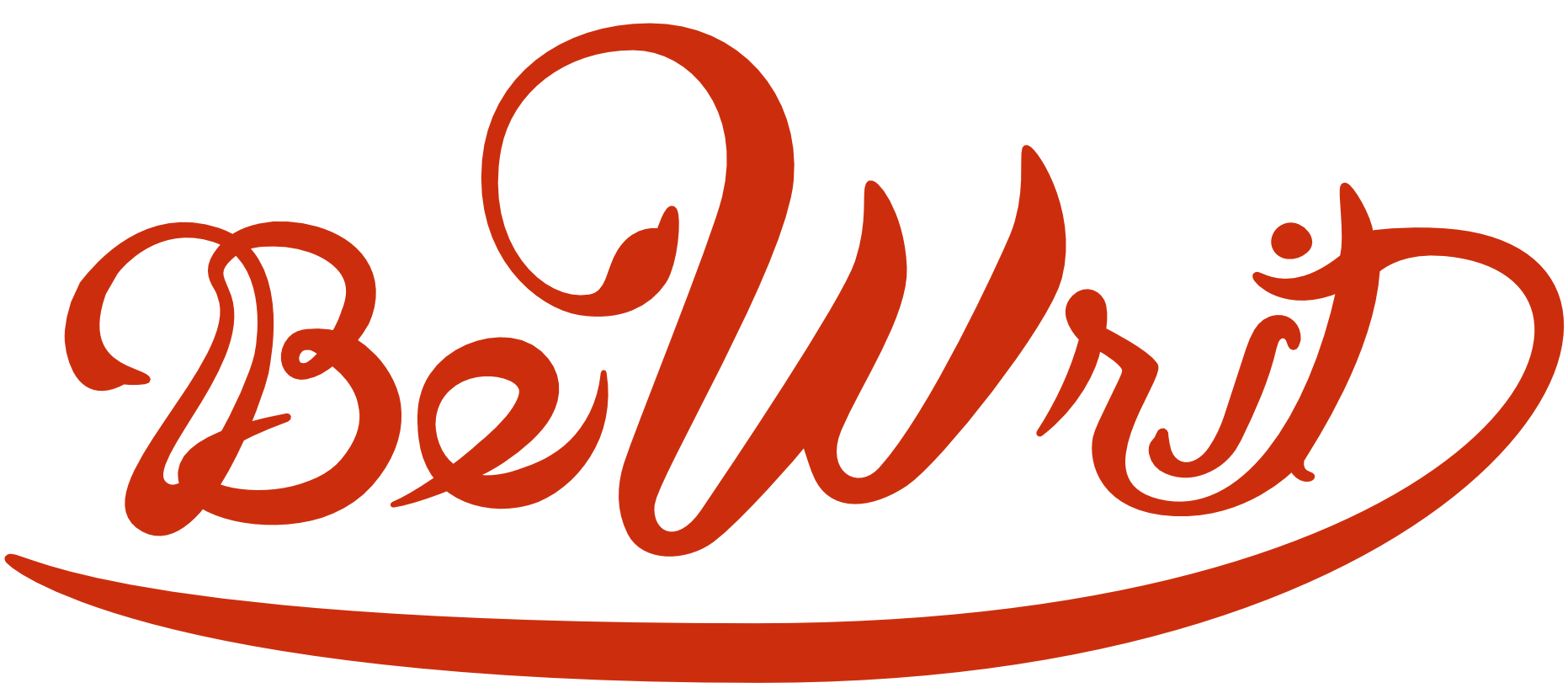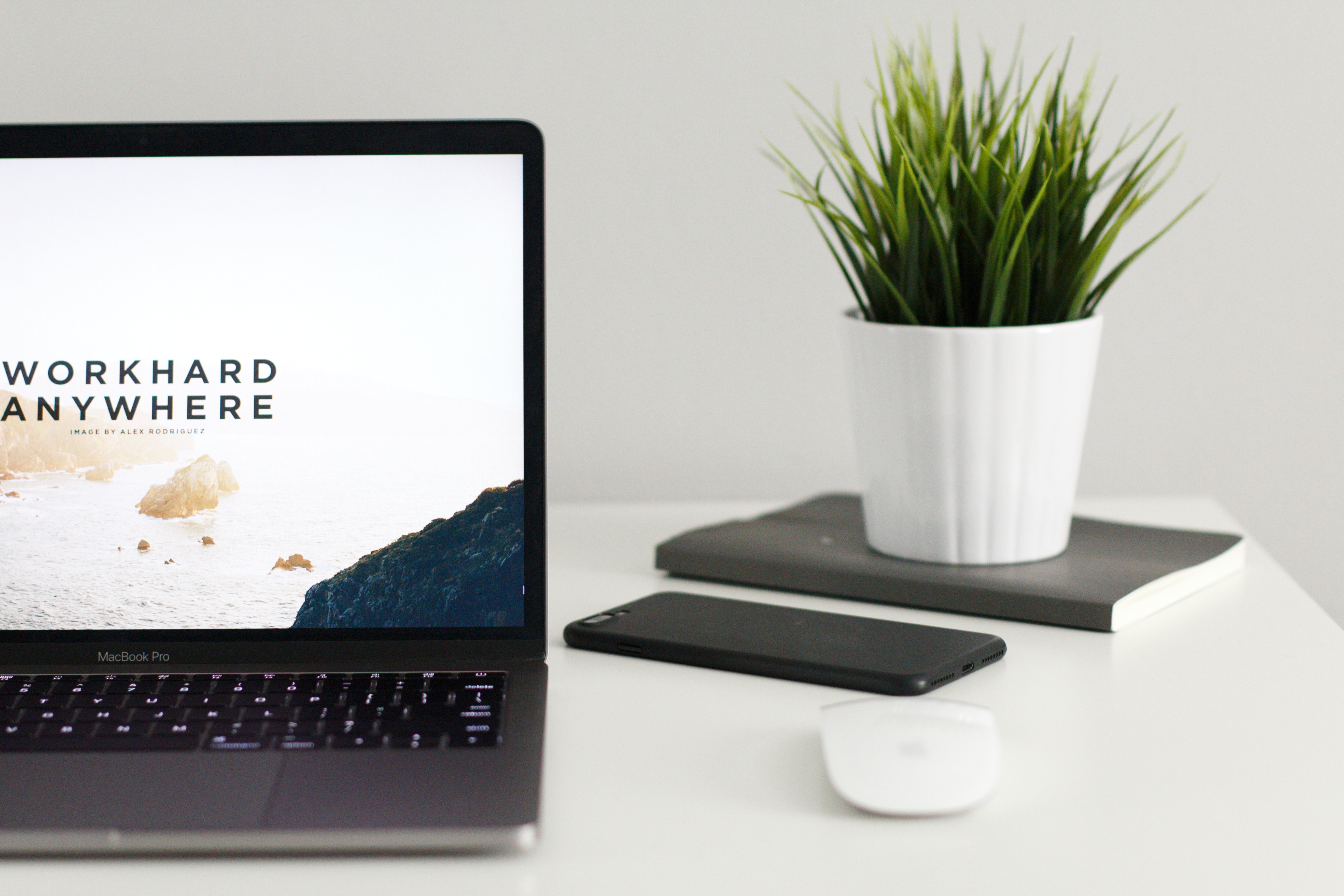
20 Tips to Create a Productive Workspace Wherever You Are
Disclosure: My blog contains affiliate links, which means I receive a tiny commission from qualifying purchases. I link to these companies and products due to quality, regardless of whether you buy or not.
A productive workspace can boost how much you accomplish in a day and help you manifest your goals faster than you thought possible, no matter where you are.
If there's one thing freelancers know, it's that you don't need an office space to get work done.
Work efficiency is all about how wisely you spend your working hours. This general rule of thumb extends all the way down the ranks in your team. We see real-world examples to prove this point constantly. In an office setting, for example, one person messing around causes a chain reaction.
Then, there’s knowing how to work efficiently.
Some companies try various tools to keep everyone on the same page, which doesn’t always work. Not to mention all the email clutter and time wasters in typical offices today, it’s a miracle anyone gets any work done at all!
All the meaningless productivity apps and unnecessary meetings eat away your time. In fact, 85% of employees are disengaged (and less productive) at work, according to Gallup's State of the Local Workplace.
And if you work in a public, open office setting, you can forget about getting a lot done at work. Open offices, according to an Exeter University study, are 15% less productive and create a 32% reduction in an employee's overall well-being.
Productivity and overall well-being are the primary reasons many people choose to leave the office. It’s also one of the many reasons people choose to freelance or opt for remote work. Studies even show that 77% of the employees who work remotely report an increase in productivity.
Perhaps the best part about working remotely and freelancing is that you are in complete control over your productivity and your workspace. You can use both to transform your life and start living happier.
But how do you boost productivity and efficiency by altering your workspace? It's simple: make the area you choose to work in suits your ultimate needs. Next, boost up the things that help you get more done.
Little changes can go a long way.
If you want to take action and improve your productivity wherever you are, read on. I'll show you the best 20 tips I've personally used to create a productive workspace (and get more done).
What Makes a Workspace Productive for You?

Before you can create the most productive workspace, consider your needs. Different people have varying needs when it comes to essential objects, including your calendar or to-do list, filing system, and writing utensils.
You also need to consider the space you have available. Do you already have a workspace you plan to spruce up, or do you need to designate an area for work altogether?
Keep it as minimal as possible. Think about only what you absolutely need on your desk. For example, my workspace has my:
- laptop and charger
- window, for staring longingly while I think up the perfect word purposes
- headphones, so I can play music and drown out the noise my neighbors make
- planner, where I include daily to-do lists and track goals
- notepad for the ideas that randomly pop into my head (or, you know, notes)
- cup with basic office supplies, including a sharpie, pen, pencil, and pair of scissors
- yoga ball, where I sit (and bounce) to work
- accordion-style file folder housed underneath the desk space
- workbag hanging from the desk for a quick morning getaway
- peace lily houseplant in the corner to cheer me up
Your workspace may look differently, based on your needs and goals.
1. Incorporate Natural Light
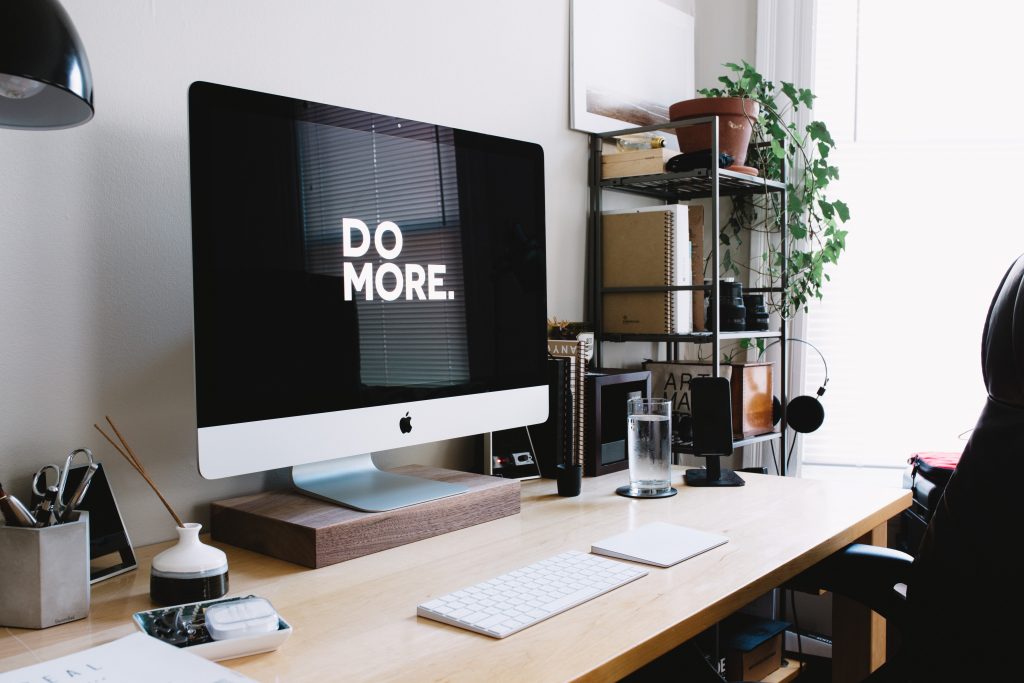
With so many workers spending most of their time indoors today, new issues like eyestrain, blurred vision, headaches, and sedentary weight gain plague the average person. Add natural light rather than harsh fluorescent bulbs when you can to help reduce these unwanted effects.
If you work inside, place your desk near a window. Head outside to work on the patio whenever possible as well. Getting plenty of natural light, according to a Cornell professor's study, significantly boosts health, wellness, and productivity in workers.
2. Make Your Space Comfy
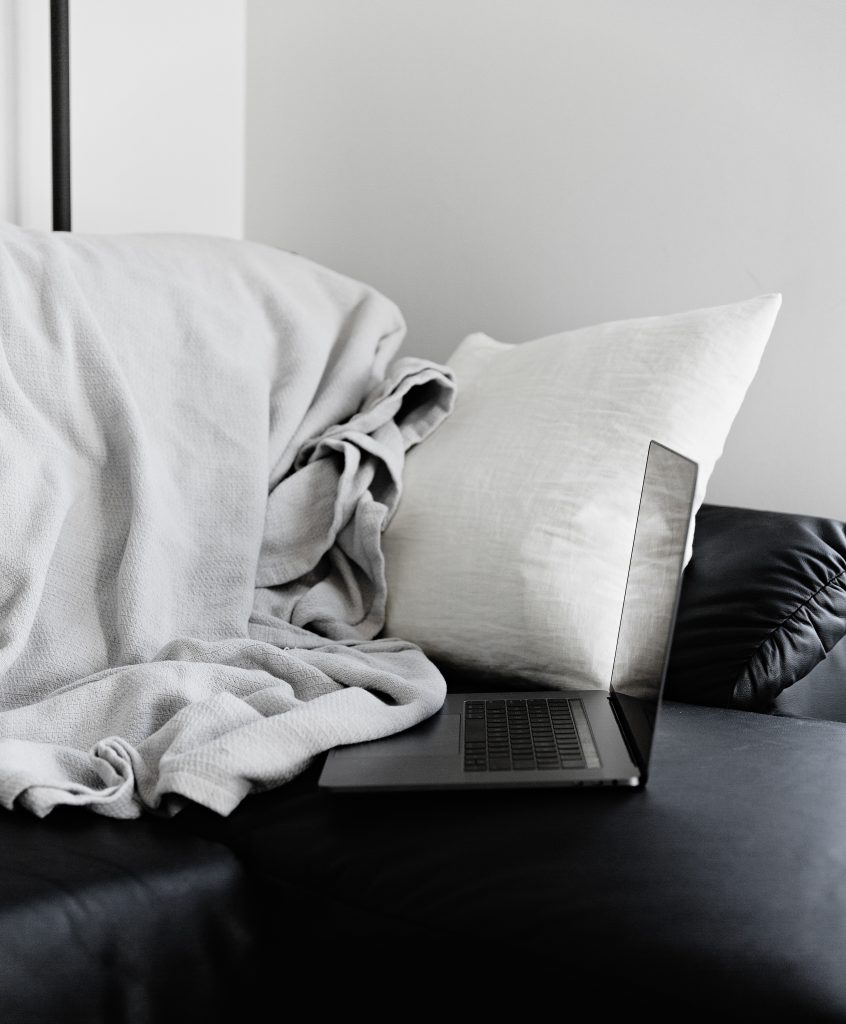
Comfort is one of the best things you can do to make your space more productive, but remote work allows you to customize your space without restraint.
Make sure your workspace is warm and comfortable for you. In a CareerBuilder study, 53% of the people surveyed said they're less productive when the environment is cold.
I get cold quickly, so I keep a warm blanket or sweater in my workspace for winter mornings. It's easily accessible, allowing me to throw it on when I need it. However, your idea of comfort may look different.
3. Add in a Plant
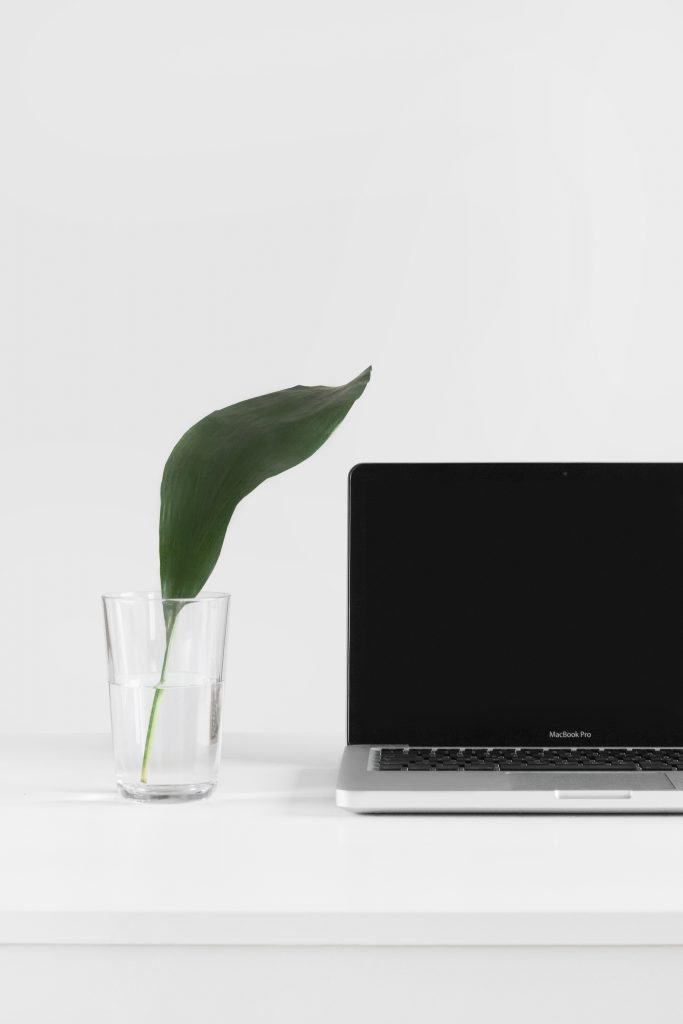
There are so many reasons to bring plants into your workspace!
Adding houseplants to your home office can improve the air quality in the room, reduce fatigue, boost your mood, lower stress, and even decrease the number of times you get a sore throat or cough.
Studies show that plants make for a happier workplace. They even make you feel relaxed, which improves memory, concentration, and overall productivity.
If you don't already have a plant on your desk, small succulents are a great way to add a touch of green. These tiny plants are ideal for beginners and offices because they're hardy and require little care.
4. De-clutter

A cluttered workspace means you can't find the tools you need when you need them. Taking a few minutes at the beginning or end of your workday to de-clutter your space can help your work hours become more productive and change the way you work each day.
5. Use Flexible Furniture
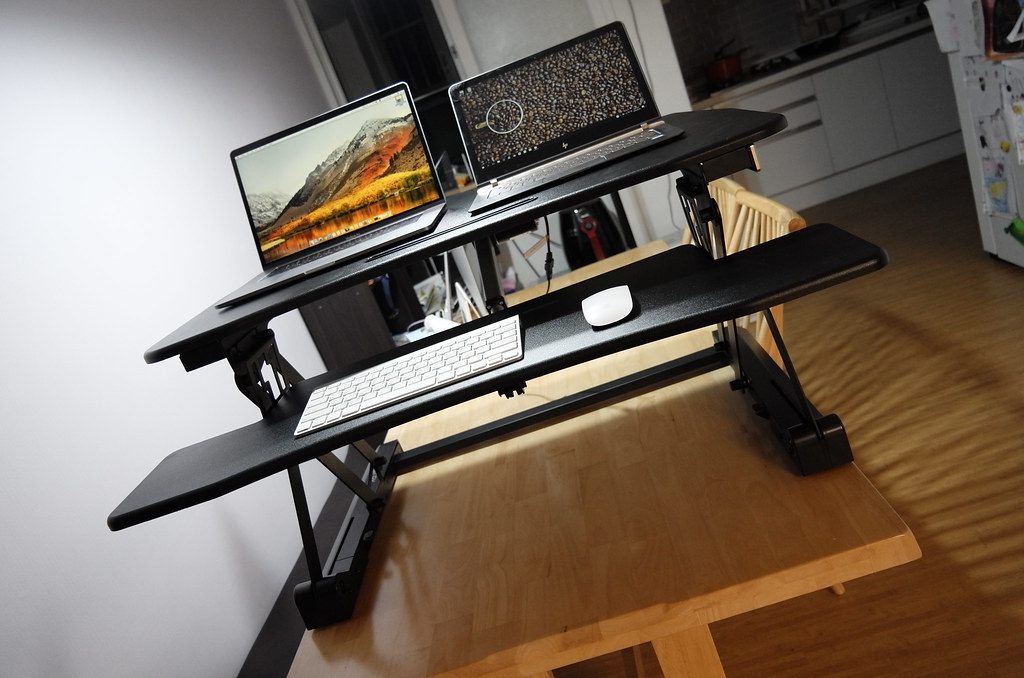
Standing desks, treadmill desks, and other furniture that offers more than one use are ideal for productive workspaces. You can alter how you use the furniture based on your project or stand when you can handle sitting still anymore.
There are also tons of other tools to allow you to alter your workspace, like stands to lift your computer or keyboard.
6. Buy an Ergonomic Chair
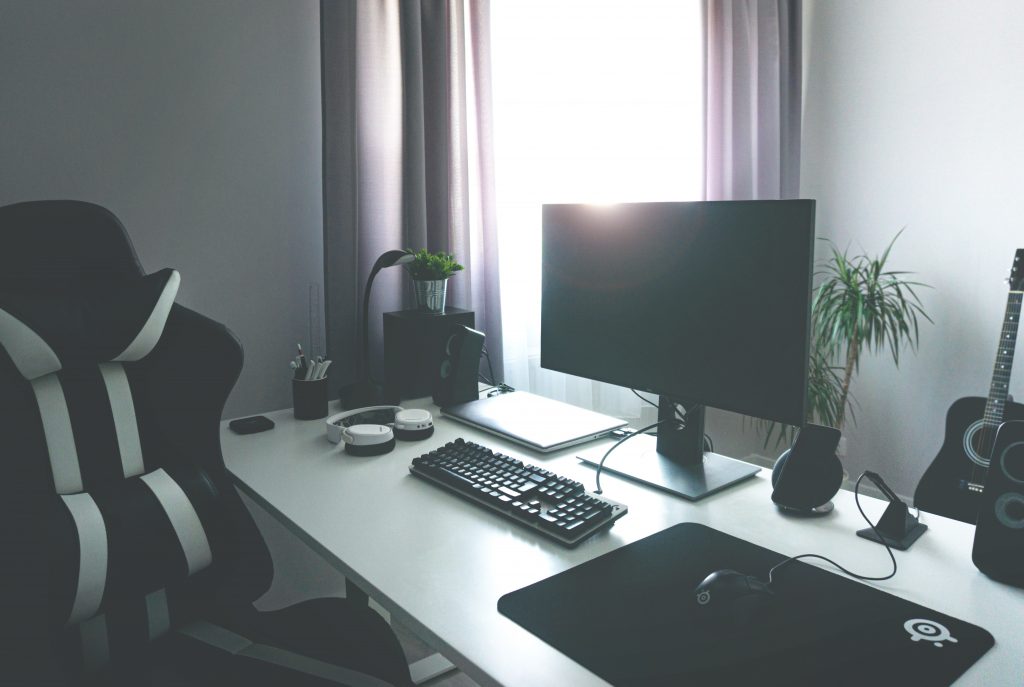
An ergonomic chair makes a ton of difference if your job involves sitting all day long. They improve back pain and prevent harmful sitting positions. The chair simply allows the body to align correctly, keeping your shoulders from slouching or leaning your head forward.
After sitting in an ergonomic chair all day, you'll notice your body feels much better. With less pain and discomfort, you can spend more time focusing on work.
Don't want to sit in a chair? I use a yoga ball desk chair and love it!
7. Organize Papers and Chords
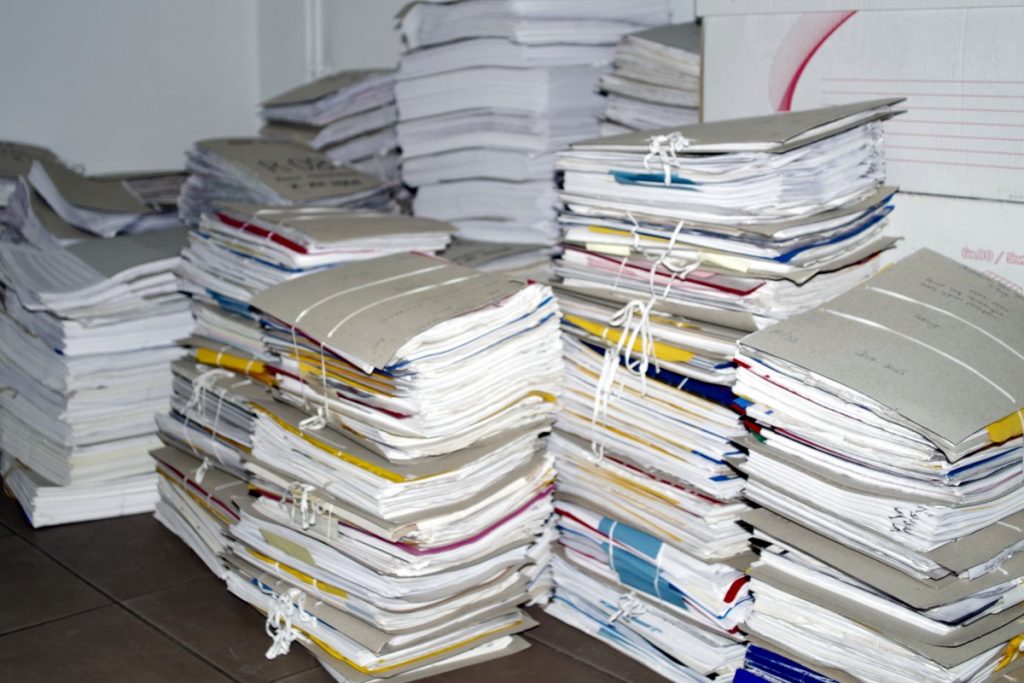
Modern workspaces are often littered with papers and chords. Desks can become cluttered messes of stress before you know it!
Organize the papers into a file folder system and keep your various electronic devices' chords tied back to make your desk appear uncluttered.
8. Paint Using Intentional Colors

Painting the room you work in can help you boost productivity. However, the best option for you may depend on your industry.
Decide which color to use, depending on your intention:
- Blue: The best color for productivity regardless of your industry, painting your workspace blue promotes calm feelings, clear thinking, peace, and focus.
- Red: A red room can increase your heart rate and make time seem to go by faster. It's ideal for high-energy, physically active jobs.
- Green: Excellent for highly stressful jobs, green is soothing and promotes calmness.
- Yellow: Creates positive emotional responses. Although yellow isn't encouraged in offices, it's ideal for helping creative fields generate new ideas. Try painting your break area or meeting space yellow.
9. Incorporate Photos

Picture frames with photos of your loved ones near your workspace promote calmness on the most stressful days. However, avoid using more than three photos on your desk to prevent adding more distractions.
10. Diffuse Essential Oils

Essential oils have tons of uses today. They're a natural cure-all. There's no surprise that there are oils to help increase concentration, creativity, and confidence as you work. However, the safest method to use essential oils for work productivity is to diffuse a few drops in your office for around 20 minutes.
My favorite essential oils for work time include:
- Lavender: Boosts creativity and your communication skills while reducing anxiety and promoting calm.
- Rosemary: Stimulates concentration and productivity in the workplace.
- Ginger: Helps you feel bold, calm, and confident when you need a mood boost.
- Orange: Drastically reduces anxiety and fear when you're having trouble starting a new project.
- Bergamot: Increases all positive feelings, from creativity to self-esteem.
- Sandalwood: Increases your focus, calms obsessive thoughts, and helps your self-esteem shine.
- Ylang-ylang: Reduces the rate of burnout and helps you kick self-doubt to get started.
- Pine: Awesome for when you need a boost of creativity and courage.
- Cedarwood: Creates a grounded, more focused, and courageous feeling.
11. Limit Reminders
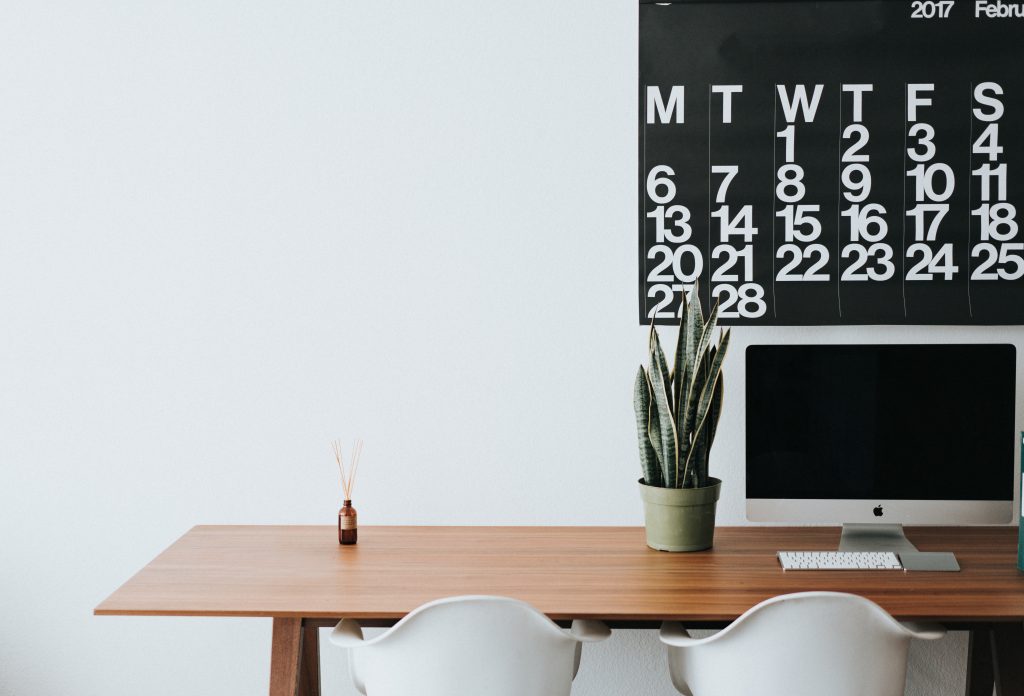
To-do lists and calendars are excellent, but only when they work. Sometimes too many reminders can deter productivity instead of boosting it.
Limiting the reminders that you see each day allows you to focus your work time on what truly matters. This applies to the apps and electronic reminders you use online as well.
12. Color-Code Files

If your work involves a lot of paperwork, consider using color-coded file folders.
Freelancers, for example, often have to track all the receipts for materials and other deductibles they spend money on throughout the year as well as invoices, contracts, etc.
The colors can allow you to find what you need faster and stay organized.
13. Consider a Timer
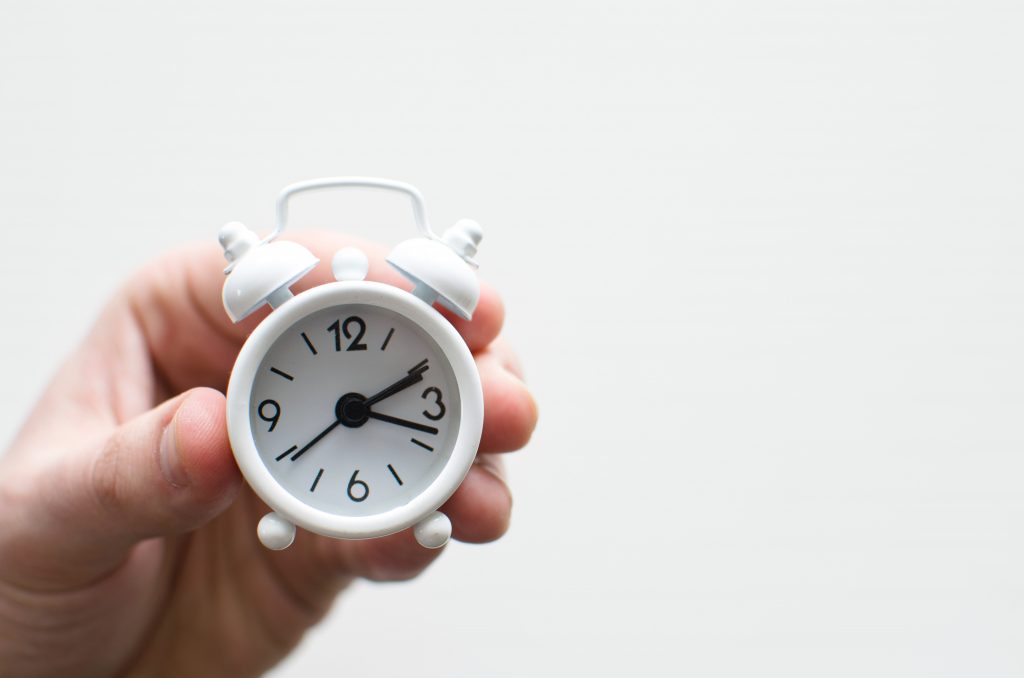
Clocks or timers are helpful for some people but may hinder others' productivity.
Consider using a timer if you often get paid by the hour and need to time your work. You can also use a timer to help you stay on track and get more work done faster. Set the timer for 20 minutes and make it a game by trying to get as much done during that time as possible.
14. Adjust the Screen

Try moving your screen around for an ideal view. Doing so may help protect your neck and shoulders against the aches and pains you face after a long day of work. Different laptops offer stands that may help. Consider looking for something you can alter when purchasing your next laptop.
15. Use a Dream Board
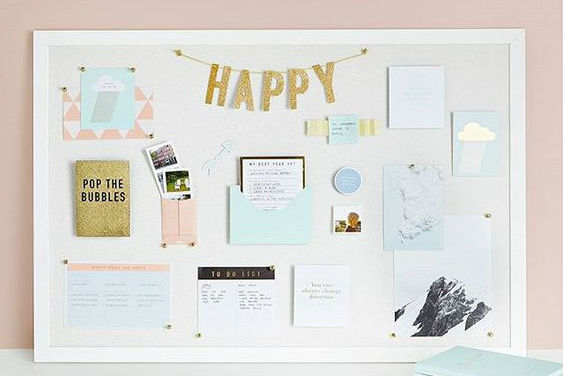
A dream board, also called a vision board, works because it inspires and motivates you. They make you consider what you really want from life and help you envision the outcome. In the workspace, they function as a daily visual reminder of your dreams.
The purpose is to clip out images of anything you want to manifest in your life, such as your relationship goals, career choices, finances, health, and personal growth.
Visualize where you see your career going. See yourself meeting your current goals, and attach the images you relate to your vision to a corkboard with pins.
My dream board has photos, inspirational quotes, and small reminders of my courage and power. I update it every year.
You can even create an online dream board, so you don't have to print and clip images from scratch.
16. Create a Break Area

Traditional offices usually offer a break room, where employees can go to take a few minutes to themselves. Studies show that taking a mental break, whether to grab a snack, brew a cup of coffee, or chat with coworkers, helps avoid burnout and promotes healthy living.
Even if you work alone at home, you should set a designated area to take your breaks. Create a favorite sitting area with a comfy chair, grab a snack from the kitchen, or head outside for a few minutes to break up your day.
I try to get up and move into my kitchen sitting area every few hours, making it a point to brew a fresh cup of joe and look outside for a few minutes (which helps my eyesight readjust from looking at a close screen).
17. Decorate with Artwork
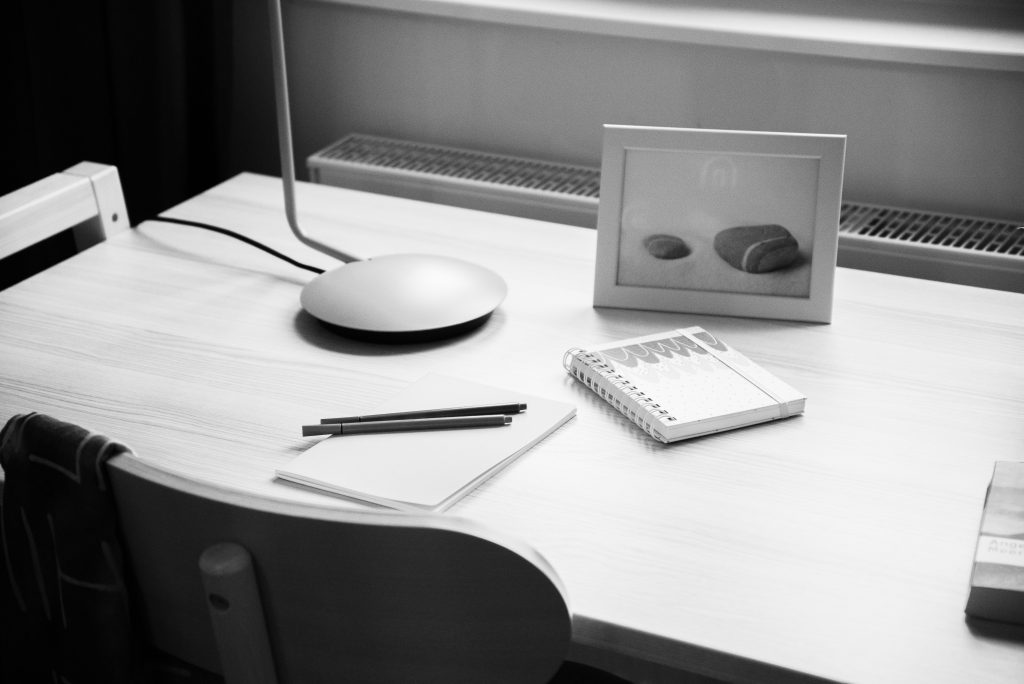
An art-filled, creative workspace doesn't just boost your creativity too. It promotes wellness, reduces stress, increases your memory, encourages empathy, and add inspiration.
There are so many ways you can use art to customize your space. Find a few essential tips to get started on your workspace, based on your aesthetic. Or, start out with an original painting from an Etsy artist.
18. Place Daily-Used Objects within Reach

Keep only the essentials on your desktop to reduce distractions while you work.
Make a list of all the things you use daily. After a week, anything you have on your desk that didn't make it to your list should go somewhere else. Put away the supplies you don't use often enough and consider donating the things you never touch.
Everything I need is easily accessible and within reach. I have the things I use constantly - like my notepad and a cup of basic office supplies - sitting on top of the desk. My headphones rest directly on top of my closed laptop, waiting for me.
Then, my file folder and color-coded file folders help me find the papers I need in no time. I keep it housed under my desk for easy access.
Anything else I need is located in my workbag, which I hang from the desk for a quick morning getaway.
19. Minimize Noise
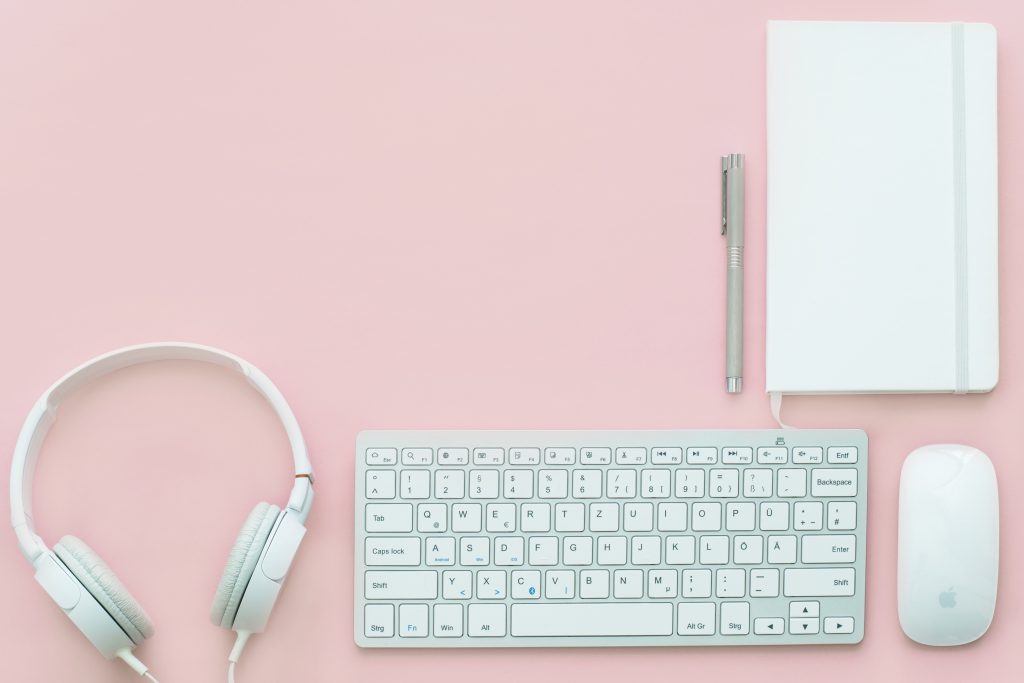
Lowering the noise around you while you work, according to a study by Cornell University, can:
- increase productivity
- lower stress
- boost task motivation
While you don't have control over the noise that other people are making around you, tools like noise-canceling headphones and earplugs can help.
I prefer to play music when working, so I don't hear always my neighbors. 71% of the people surveyed also say they think that listening to music helps boost productivity.
20. Allow for Movement

Sedentary lifestyles are the new cancer. Studies show that the less amount of physical activity causes obesity and type two diabetes, increases your risk of dying from many types of cancer, and even makes it more likely you'll die early from heart disease and other unfavorable causes.
As humans, we weren't designed to sit around all day. Time has basically transformed us into houseplants. However, incorporating more movement throughout the day can help you live happier and healthier.
Bring movement into your daily life by switching out a traditional desk chair for an alternative. Yoga ball seating or treadmill desks are a great way you can keep moving while you get work done.
What Does Your Productive Space Look Like?

What tips have helped you create a more productive workspace? Do you feel like you get more done in a home office or a public setting like a coffee shop? Share your favorite ideas in the comments below.
If working from home is new for you (due to COVID-19 or not), Cotswold Co's in-depth guide on creating a healthy and productive workspace could help you further. The resource is full of tips on working remotely, your workspace, and work/life balance.
